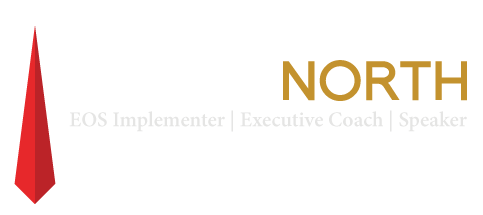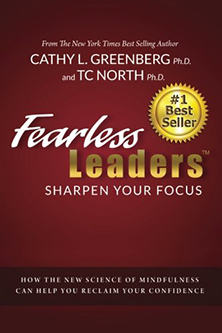You can master fear of failure, rejection selling and other fears!
Got fear? Do you have fear of failure, fear of rejection, fear of selling, or other fears that are limiting your success, relationships and happiness? Most people do. We have fears in both our conscious and/or subconscious minds.
There are rational fears and irrational fears.
Rational fears, such as … fear of rattlesnakes, are healthy. They keep us safe. Irrational fears are the rational interpretation of the false stories we make up and then believe. It’s Make Stuff Up (MSU) learning (I’ve head others use a different “s” word!). Here’s an example of an irrational fear: An entrepreneur whom I’ll call Adriana thought that if she held her employees accountable for what they were supposed to do, they wouldn’t like or respect her. After some executive coaching, she instituted accountability with her team. The result of the accountability surprised her, she learned that when she held her people accountable, they actually liked and respected her more as a leader AND they improved at their jobs. Her fear was irrational.
Irrational fears distort perception.
When you think and act out of fear, everything is distorted. Imagine wearing glasses that were tinted red. When looking through them, what you see and what you perceive is tinted red. It’s the same with fear. When you look through fear, everything seems scarier. Irrational fears distort your thinking and perception. When you master fear, you perceive through clear lenses.
What stories are you “MSUing” in your relationships? At work? In your family? Compete the exercise below to find out.
Exercise: Identify your fears. Fill in the rest of these sentences with as much information as you choose.
- I can’t … .
- I don’t because … .
- I’m afraid … .
Whatever follows “I can’t,” “I don’t because” or “I’m afraid” likely reflects an irrational fear. What are the irrational fears in your professional life? What are they in your personal life? Here’s how you can begin to master your fears.
The six steps to master fear.
These six simple steps can help you have freedom from irrational fears that keep you from fully experiencing success and happiness. This five-step process is one of the techniques in the Blast Through Fear audio training.
Step 1: Identify your fear.
From the exercise above, write down one fear you identified.
Step 2: Embrace your fear.
Gently embrace your fear; imagine it. What does it look like? What might it sound like? Does it have a name? Drawing your fear without judgment is sometimes quite revealing; just let your hand draw freely free of judgment. Remember, you created this fear and continue to create it, so you developed this fear for a reason. Its original purpose was to protect you, but now it holds you back. Be thankful for the protection it gave you when you needed it. Acknowledge your fear, and then release it with deep appreciation. Begin to let it go.
Step 3: Disidentify with your fear.
Fear isn’t you. Your beliefs have created fearful thoughts, and your fearful thoughts have created a fearful emotion. But you’re not your beliefs, thoughts or your emotions. Emotions come from thoughts, and all thoughts are transients.
Now you need to disidentify with your fear because it isn’t you. Using the image you created in step 2 imagine examining your fear outside of your mind and body (it’s outside of you — it’s not you) and slowly let it dissipate, shrink, etc. See, feel or hear your fear leaving you, moving behind you and becoming smaller and weaker until it disappears. Let it know you’re safe without it. Time to let it go with kindness; it’s not you!
Step 4: Identify and accept your worst-case scenario.
This can be extraordinarily powerful. Years ago when I was a psychotherapist, I worked with an incredibly intelligent, charming woman whom I’ll call Alice. Alice was a nurse who was afraid her abusive husband would leave her for a younger woman who worked in his office.
During a session I asked Alice, “On a scale from 0 to 10, how distressing is the thought of your husband leaving you?” She answered, “Ten.”
Then I said, “What would you do if your worst-case scenario came true and your husband left you?”
She replied: “I’d volunteer with Doctors Without Borders. This has been a dream of mine for years, but my husband has always been against it.” With the realization that she could live her dream if her husband left her, she broke into a smile and carried on and on about how much she wanted to volunteer with Doctors Without Borders.
As Alice left that day, I asked her, “What is your level of distress now about the possibility of your husband leaving you?”
She replied, “Zero!”
I said, “You aren’t thinking of leaving him, are you?” She smiled and walked out the door; I never heard from Alice again.
Worst-case scenarios don’t always look as good as Alice’s did to her, but it’s usually not as bad as we fear. Even if it’s what most people consider the worst outcome, death — which is the worst case for athletes such as freestyle mogul skiers, downhill skiers and car racers — you must come to peace with the worst case if you want to be successful. It’s true in sales, building a business, marriage, everything. If you worry and focus on your worst-case scenario, then subconsciously that’s what you attract. Fear takes you out of the present moment, distorts your thoughts and changes your actions. And it focuses you on creating what you fear, what you don’t want. Time to come to peace with your worst case.
Step 5: Do a reality check.
Now that you identified and are beginning to accept your worst-case scenario, what’s the probability of it happening? Accept your worst-case scenario like Alice did and then put your worst case aside without emotion.
Step 6: Create a fearless focus.
Don’t empower your worst case by focusing on it. Instead, now that you have accepted it, focus on what you want — as if you already have it — to strengthen that neuronetwork in your brain!
When you overcome and master fear and focus on what you want, your success and happiness have no limits! When you master your fears and master your mind, you master your life!
Note: If you have panic disorder, phobias or another mental health disorder, you may need deeper work, such as eye movement desensitization and reprocessing (EMDR). Or, if you’d benefit from an expert on resolving fear to accelerate you mastering fear, consider coaching.


